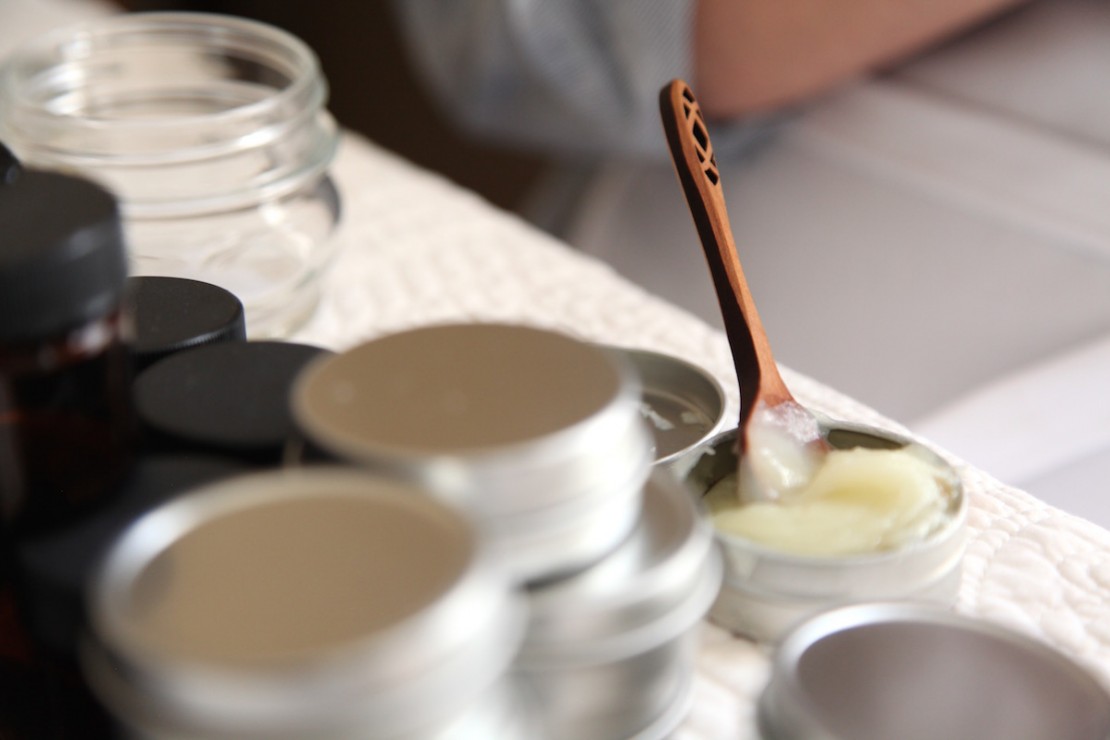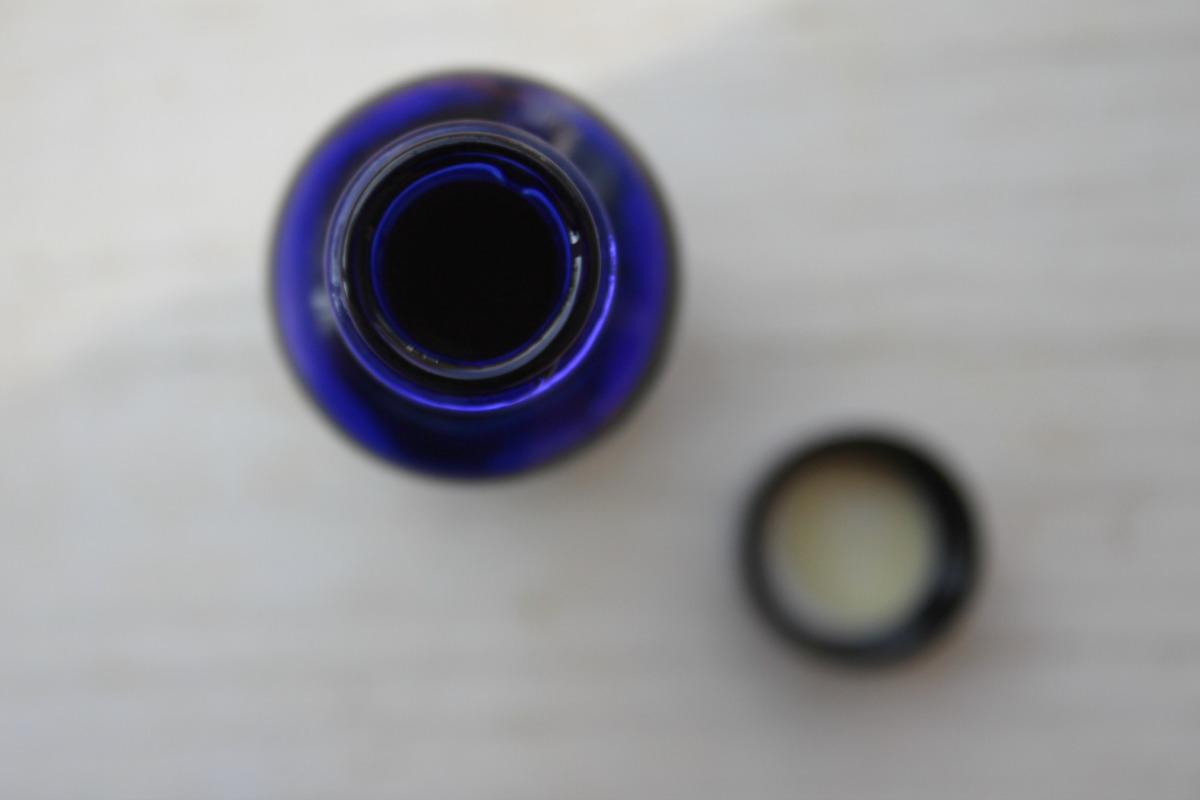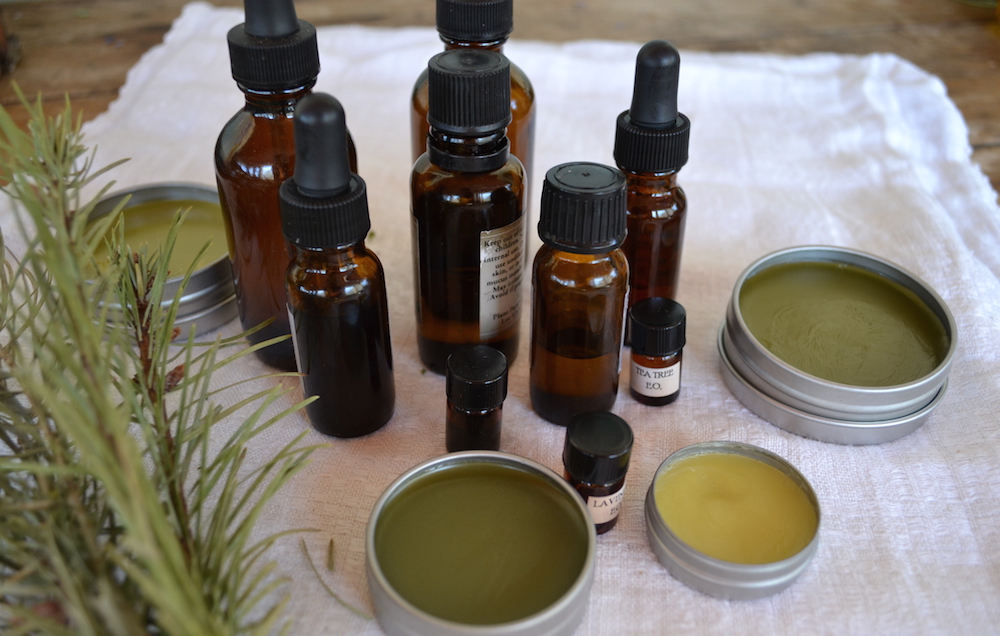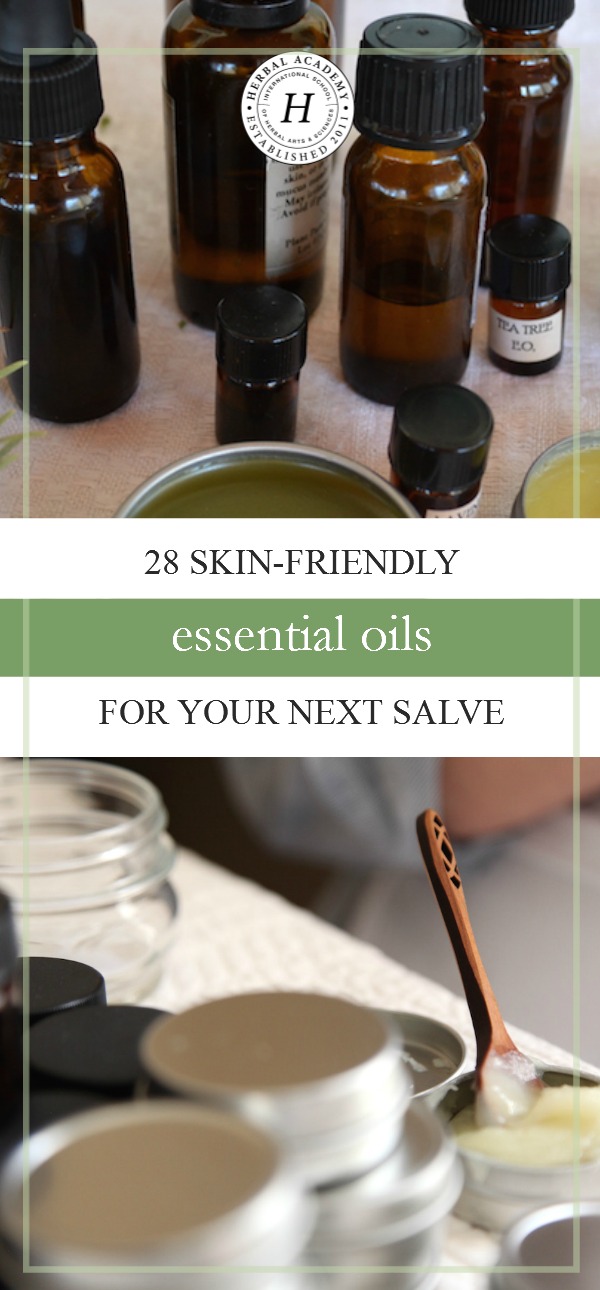
28 Skin-Friendly Essential Oils for Your Next Salve
Essential oils are often included in herbal and cosmetic preparations for aromas, their anti-inflammatory or antimicrobial actions, or their effects on our psyches. The problem with using essential oils topically is that many of them are drying or irritating to the skin and can even cause allergic reactions in some people. Which essential oils are the best choices to include in a skin salve?
Reasons For Choosing An Essential Oil
Essential oils may be selected for any of several reasons:
-
- As the primary or core, active ingredient (e.g., in an insect bite salve or a free breathing chest salve)
- As a supporting or harmonizing ingredient
- For a pleasing aroma
- For emotional support (e.g., nighttime lavender hand salve)
- As a skin penetration enhancer
Choosing A Core Essential Oil
Some essential oils have powerful therapeutic profiles, making them theoretically top choices as core and harmonizing ingredients (e.g., cinnamon bark, oregano, thyme, clove bud, wintergreen, peppermint, Eucalyptus), but they may also have issues with either various contraindications or with being particularly irritating to the skin.
Cinnamon bark, for instance, is a known skin sensitizer, while oregano is an extremely “hot” oil, which produces a powerful warming sensation, can cause extreme discomfort, and may even damage the skin. Clove bud and wintergreen are contraindicated for people using blood thinning medications or who have blood clotting issues. Since there are many other essential oil options that also work very well, it is best to avoid some of these higher-risk oils and choose alternatives for our skin salves.
Another group to watch out for are the essential oils in which monoterpenes or the monoterpenol linalool predominate. These oils oxidize relatively quickly, and oxidized essential oils should not be used on the skin.
Often there are alternatives.
Essential oils that are high in phenols (e.g., thymol), ethers (e.g., methyleugenol), and aldehydes (e.g., citral) are usually irritating and sometimes sensitizing on the skin. These oils should be used in extremely low dilution or not at all in topical applications.
Some essential oils that are usually high in phenols, such as thyme, have a high phenol chemotype which is harsh on the skin (thymol chemotype) and one which is skin-friendly (linalool chemotype). Both have antimicrobial actions, but your skin will thank you for using the latter and not the former when creating a skin salve.
If the chemotype is not written clearly on the essential oil bottle label, call your retailer and ask which chemotype is in your bottle. This information should be clearly and easily available.
Most essential oils that are high in monoterpenols, such as linalool and borneol, balance significant antimicrobial properties with being gentle on the skin, making them good choices for core and harmonizing ingredients.
One important exception to this generalization is peppermint, which, despite being high in the monoterpenol menthol, may create an uncomfortable feeling on the skin when too much is applied.
With concentration-dependent oils like peppermint, the essential oil should be used as a very small part of the blend, even if it is one of the key ingredients. Generally speaking, though, essential oils that are high in monoterpenols are excellent choices for skin salve core and harmonizing ingredients.

Skin Penetration Enhancers
There are several essential oils that have been shown to increase the rate at which essential oil constituents are transported through the skin and into the body. These include oils which are high in d-limonene (Takayama & Nagai, 1994), oils containing 1,8 cineole (e.g., Eucalyptus) (Saify et al., 2000), and a few others.
The upside of this seems fairly obvious—including a skin penetration enhancing essential oil can decrease the time it takes for a salve to have its desired effect on the body. But there is also a downside, which is the reason why one should not use any essential oil containing product in an area where a time-release drug patch is applied to the skin. The downside is that the essential oils can cause the drugs also to be released into the body at a faster rate than intended, with possible negative results. Additionally, if there are toxins on the skin for some reason, these can also be absorbed more quickly into the body if essential oils are applied over them, such as in the case of a scrape, insect bite or other puncture wound, use of toxic cleaning supplies, or simply some other kind of topical toxin exposure.
How Much Essential Oil To Include
What dilution should one use in a salve? Unfortunately, that question does not have a simple answer.
Because a salve is often used to target small problem areas, higher dilutions can often be used. The exact dilution, though, will still be determined by the specific oil being considered, the intended therapeutic purpose, the frequency of use, the area of the body to which the salve is being applied, as well as the health condition of the person using the salve.
Some general guidelines would be:
- Higher concentrations can be used for those who have more experience with essential oils, for salves that will be applied to very small areas of the skin, with essential oils that are non-irritating, for adults ages 13-70, and for salves that will be used for acute or short-term conditions. These concentrations might range from 3%-10%. However, the vast majority of applications require no more than 5% dilution.
- Lower concentrations, often around 1%, should be used for those with less experience with essential oils, with essential oils that can be irritating, for all children (over age 2), pregnant women, those with sensitive skin, the elderly, and for any long-term use of more than a few days (often 2%).
Remember that with essential oils, as with herbs, more is not necessarily better.

Salve-Savvy Essential Oils
When selecting essential oils for your next salve, consider an essential oil that is at least skin-friendly and possibly even skin regenerating, even as the core or harmonizing ingredient. If a less skin-friendly oil is selected as being the most appropriate for this primary ingredient, then the other essential oils should be selected especially for their skin-supportive qualities.
The essential oils categorized here as “skin-friendly” support the skin through several different therapeutic properties, such as being anti-inflammatory. They are generally non-irritating with no known, significant safety concerns and are, in some cases, even skin-regenerating. These essential oils have a particular affinity for the skin, can balance and harmonize with included ingredients that may be irritating to the skin, and are good to include in a salve regardless of the salve’s purpose.
A little side note: There is a new kid on the block when it comes to plant extracts. Keep an eye on the growing number of CO2 extracts available. These essential oil cousins have much to offer, yet, being created by a fairly new extraction method, they have been studied less extensively and their potential safety concerns are not yet as well known. Some plants that provide essential oils, such as German chamomile, also provide slightly different CO2 extracts, but there are other plants, such as Calendula, that have no commercially available essential oil yet produce a wonderful CO2 extract. Both of these CO2 extracts, while not all that easy to work with, have great potential as skin-friendly salve ingredients to be used at extremely low dilutions (0.1%-0.3%).
A Couple of General Rules
The following categories of essential oils tend to be supportive of the skin:
- Essential oils made from resins (e.g., frankincense, myrrh, opopanax)
- Monoterpenol- and sesquiterpenol- dominant essential oils (e.g., lavender or sandalwood)
Skin-Friendly Essential Oils And Absolutes (This is not an exhaustive list)
- Balsam copaiba (Copaiba officinalis)
- Carrot seed (Daucus carota)
- (Virginia) Cedarwood (Juniperus virginiana) (especially CO2 extract)
- Cistus (Cistus ladaniferus)
- Elemi (Canarium luzonicum)
- Frankincense (Boswellia spp.)
- Geranium (Perlargonium x asperum)
- German chamomile (Matricaria recutita)
- Helichrysum (Helichrysum italicum) (Caution: should not be used on wounds that should be left open, such as puncture wounds or infected wounds, as skin may heal too quickly)
- Jasmine absolute (Jasminum grandiflorum)
- Lavender (Lavandula angustifolia)
- Myrrh (Commiphora myrrha)
- Opopanax (Commiphora guidotti)
- Palmarosa (Cymbopogon martini var. motia)
- Patchouli (Pogostemon cablin)
- Rose absolute and Rose otto (Rosa x damascena)
- Sandalwood (Santalum spp.) * be sure to acquire sandalwood from sustainable sources
- Tea tree (Melaleuca alternifolia)
- Vetiver (Vetiveria zizanoides)
- Yarrow (Achillea millefolium)
Skin Penetration Enhancers
- Especially oils rich in 1,8 cineole and d-limonene
- Basil ct. linalool (Ocimum basilicum)
- Eucalyptus (Eucalyptus globulus, E. radiata, E. smithii)
- Laurel leaf (Laurus nobilis)
- Niaouli (Melaleuca quinquenervia ct. 1,8 cineole)
- Ravintsara (Cinnamomun camphora ct. 1,8 cineole)
- Rosemary ct. 1,8 cineole (Rosmarinus officinalis)
- Spike lavender (Lavandula latifolia)
- Citrus (lemon, mandarin, sweet orange, etc.)
Skin salves are used for a wide array of therapeutic needs, which is why adding essential oils to your skin salve can be extremely beneficial. Sometimes, in order for the skin salve to provide the effects for which it is being designed, an essential oil that is harsh on the skin may be included in the blend as a core ingredient. In such cases, it is best to use that essential oil in very low dilution (1% or less, in many cases) and blend it with supportive, skin-friendly or skin-healing essential oils.
*** SAFETY: Please check each essential oil you choose for its particular safety recommendations and how they apply to your particular age, sex, and health situation as well as skin safely with topical applications.
Further Reading
There are several salve blog articles on the Herbal Academy website. One of these is a basic article on How to Make a Healing Salve, which can be used as a general guide for making salves to which essential oils can be added.

REFERENCES
Saify, Z. S., Ahsan, O., & Dayo, A. (2000). Cineole as skin penetration enhancer. Pakistan Journal of Pharmaceutical Sciences, 20(4), 677-684.
Takayama, K., Nagai, T. (1994). Limonene and related compounds as potential skin penetration promoters. Drug Development and Industrial Pharmacy 20, 4, 677-684.







